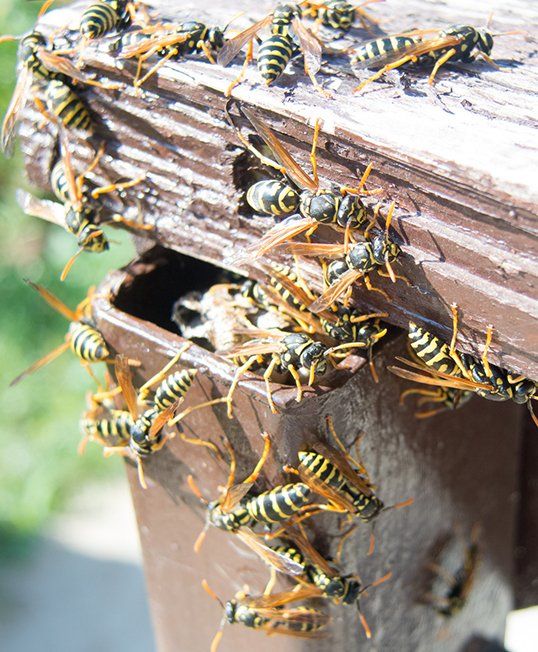Wasp and Hornet Removal
What is a Wasp?
Wasps include over 30,000 species of winged insects with stingers. Unlike honey bees, wasps can sting multiple times when threatened. Though they can be aggressive, they generally prefer to be left alone. Wasp removal begins with looking for signs of nests in and around structures and the observance of worker wasps in the area.
What is a Hornet?
Hornets are a species of wasps that cover most of the world. They are predators that feed on bees, flies, and other large insects. Their aggressive behavior leads most homeowners to seek removal services at the first sighting of hornets around their home.
Wasp and Hornet Behavior
Wasps and hornets follow the same basic behavioral patterns. They all build nests of some type. Hornets and wasps that live socially build large colonies similar to ant mounds or beehives. Solitary wasps build small nests to protect from the elements and a place for breeding. Most species create their nests by chewing wood fibers into a paper-like substance used to build the nest. Removal of wasps and hornets will usually focus on eliminating these nests.
Wasps and hornets are typically active during the day. They leave their nests to hunt before returning each night. A common hornet removal tactic is to apply poison to the nest while the hornets are hunting so that it kills them when they return.
The warm weather months are generally wasp and hornet season. Most species die off during cold weather except for queens that hibernate. In the spring, the queen wakes up and forms a new brood of wasps and hornets. To help head off an infestation, schedule wasp or hornet removal at the first sign of a new brood to prevent thousands of additional wasps and hornets from hatching.
Preferred Environments
Wasps and hornets are found throughout the world but do best in moderate to warm climates where they have an extended breeding season. They prefer to build their nests in dry places that are protected from extreme temperatures. This makes awnings, exterior stairwells, and crawl spaces an attractive location for them. Nests in these areas pose a high degree of danger for children and pets and make hornet removal a necessity.
SIGNS TO WATCH OUT FOR
- Concentrations of wasps and hornets: Large numbers of these insects in an area often signal a hidden nest is nearby and removal may be necessary
- Deadwood: having readily available nest material attracts additional wasps and hornets.
- Loose ground: Dead leaves and other ground cover can protect an underground hornet nest
Do you have wasps or hornets in your yard? Contact us today to schedule wasp or hornet removal.



